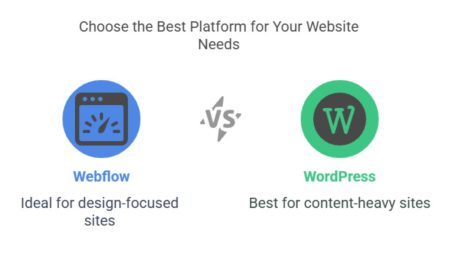In modern world of software development, the Agile methodology has become a cornerstone. But why? What are some of the benefits of the Agile development methodology that make it the “go-to” for so many teams around the globe?
A Tale of Two Projects
What are some the benefits of the agile development methodology? Imagine two projects racing towards the finish line. One follows the traditional Waterfall method, where each phase must be completed before the next begins. The other adopts Agile, with its iterative cycles and flexibility. The Waterfall project is like a train chugging along a rigid track – no room for deviation. In contrast, the Agile project is akin to a nimble speedboat, swiftly adjusting course as new challenges emerge. Which do you think reaches the destination faster and with fewer hiccups? The answer, more often than not, is Agile.
The Power of Flexibility is Like Steering the Ship
In the volatile sea of software development, requirements are prone to change. Agile embraces this uncertainty. The methodology’s iterative approach allows teams to adapt to shifts in the project’s landscape quickly. Unlike the Waterfall method, where changes can be costly and time-consuming, Agile welcomes them with open arms. According to a 2020 report by the Standish Group, Agile projects have a 60% greater chance of success compared to non-Agile projects. The ability to pivot and tweak the project as needed is a game-changer. It’s like having a ship’s captain who can navigate stormy waters, adjusting the sails as the wind changes, ensuring smooth sailing towards the goal.
Enhanced Collaboration – The Glue That Binds
If there’s one thing that Agile champions, it’s teamwork. Agile breaks down the silos that often plague traditional development teams. Developers, testers, and stakeholders work closely together, constantly communicating and collaborating. Daily stand-ups, sprint reviews, and retrospectives ensure that everyone is on the same page. It’s akin to a well-oiled machine where each part works in harmony with the others. According to a survey by VersionOne, 74% of organizations that adopt Agile report better project visibility and 54% experience improved communication. This enhanced collaboration doesn’t just improve the quality of the product; it fosters a sense of camaraderie among team members. When everyone is rowing in the same direction, the boat moves faster, and the journey becomes a shared adventure.
The Early Bird Catches the Worm
In today’s hyper-competitive market, speed is of the essence. Agile’s iterative cycles, known as sprints, allow teams to deliver features incrementally. This means that a product can hit the market faster, even if it’s just a minimum viable product (MVP). The sooner a product is released, the sooner it can start generating revenue or feedback. Consider this: According to the Project Management Institute (PMI), Agile projects are 28% more likely to deliver on time compared to traditional methods. The ability to quickly push out a working product gives companies a competitive edge. It’s like being the early bird that catches the worm – Agile teams are often the first to seize market opportunities.
Risk Management is Like A Stitch in Time Saves Nine
In any project, risk is a constant companion. But Agile’s iterative approach helps to mitigate risks early on. Each sprint ends with a review, allowing the team to identify potential problems before they snowball into larger issues. It’s much like fixing a small leak in a dam before it bursts. This proactive risk management not only saves time and resources but also boosts the confidence of stakeholders. A study by Ambysoft reveals that Agile projects have a 75% higher probability of success due to their risk management practices. The ability to identify and address risks early in the process is a significant advantage. It’s the difference between a minor course correction and a full-blown disaster.
The Customer is Always Right
Agile puts the customer at the heart of software product development process. Frequent releases mean that customers can provide feedback early and often, which the team can then incorporate into the product. This constant feedback loop ensures that the final product aligns with the customer’s needs and expectations. According to a survey by PwC, 63% of Agile projects meet customer expectations compared to just 20% of traditional projects. The focus on customer satisfaction is akin to a chef constantly tasting the dish to ensure it’s just right before serving it to the guest. In Agile, the customer isn’t just a spectator – they’re part of the cooking process.
Catching Bugs Before They Bite with Quality Control
In the world of software development, bugs are inevitable. But Agile’s iterative cycles help catch and fix these issues early on. Continuous QA testing and integration are integral parts of the Agile process. It’s like having a safety net that catches problems before they can cause significant damage. A report by Capers Jones & Associates shows that Agile projects experience 25% fewer defects than non-Agile projects. This focus on quality not only saves time and money but also results in a more reliable product. After all, it’s easier to swat a fly than to chase down a swarm.
Empowered Teams Give Them the Wheel
One of the lesser-talked-about benefits of Agile is the empowerment it gives to teams. In an Agile environment, teams are self-organizing and cross-functional. This means they have the autonomy to make decisions and solve problems without waiting for approval from higher-ups. It’s like handing the keys of the car to someone and trusting them to drive responsibly. Research from Harvard Business Review indicates that teams with a high degree of autonomy are 20% more likely to be satisfied with their work and 15% more likely to be productive. Empowered teams are more engaged, motivated, and invested in the project’s success. When you trust your team, they’re more likely to deliver their best work.
Transparency – No More Smoke and Mirrors
Agile’s emphasis on communication and collaboration results in a high degree of transparency. Stakeholders are kept in the loop throughout the development process, with regular updates and demos. There’s no hiding behind jargon or complicated reports – everything is out in the open. According to the 14th Annual State of Agile Report, 43% of Agile practitioners believe that increased transparency is one of the top benefits of the methodology. This transparency fosters trust between the team and stakeholders, creating an environment where everyone is working towards the same goal. It’s like having clear skies – everyone can see the horizon and chart their course accordingly.
Sharpening the Axe Means Continuous Improvement
In Agile, the work is never truly done. The methodology promotes a culture of continuous improvement through regular retrospectives. Teams are encouraged to reflect on what went well, what didn’t, and how they can improve in the next sprint. This constant iteration and reflection lead to a cycle of continuous improvement. As the saying goes, “sharpen the axe before cutting the tree.” Agile teams are always looking for ways to sharpen their tools, improve their processes, and deliver better results. A report by McKinsey & Company found that organizations practicing Agile see a 20-30% increase in productivity due to this focus on continuous improvement.
Maximize Productivity with The Agile Advantage
So, what are some of the benefits of the Agile development methodology? The advantages are numerous and profound. Agile offers flexibility in an unpredictable world, fosters enhanced collaboration, and speeds up time to market. It empowers teams, improves transparency, and places the customer at the center of the process. And let’s not forget the focus on quality and continuous improvement. In a world where change is the only constant, Agile provides a sturdy sail for navigating the turbulent waters of software development. It’s not just a methodology; it’s a mindset – a way of working that puts teams on the path to success. So, if you’re still on the fence about Agile, it might be time to jump on board. After all, the ship is sailing, and you wouldn’t want to miss the boat.











